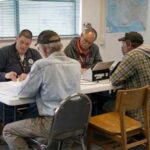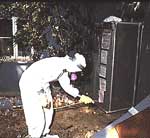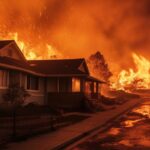Expert advice on how to remove toxins from your home, with fire prevention, lead and radon testing and abatement, and chemical-free household cleaning tips.
Is your home safe? Most of us would answer “yes,” but the facts suggest that’s not necessarily so. With burglaries occurring every eight seconds, 400,000 serious residential fires every year, and more child deaths from accidents than from all childhood diseases combined, it’s clear that many houses are not safe.
Though we can never be completely safe at home, we can take certain steps to dramatically reduce hazards and the possibility of injury or tragedy.
Preparing for problems or accidents is kind of like writing a will—we’d rather not think about it. But it’s critical that we be realistic and proactive when it comes to our safety. What we do today could save a family member tomorrow.
With that in mind, here’s a closer look at key steps you can take to make your home safer for your family.
1) Be sure your home is fire safe.
Smoke detectors are useless unless they’re working. A Consumer Product Safety Commission (CSPC) survey estimates that 16 million households have nonworking smoke detectors. In most cases, the batteries are dead or simply missing. If you haven’t done so lately, test every smoke detector in your house by pressing the “test” button. If it doesn’t sound an alert, replace the batteries—and do it now.
The CPSC has also alerted homeowners to the dangers of room candles. While home fires have decreased over the last decade, fires caused by room candles have increased due to their popularity as a decorative element. Always extinguish candles when leaving a room or at bedtime.
Keep at least two fully charged, multipurpose (A-B-C) fire extinguishers in your home, one in the kitchen area and one in the garage, located in clear view and near an exit. See more about household fire safety.
2) Prevent carbon monoxide poisoning.
All heating equipment and fuel-burning appliances produce carbon monoxide (CO) gas, which can be deadly if it is concentrated in the air you breathe. This toxic gas is normally vented out of the house but, if equipment or vents are faulty, it can leak into your living spaces. You can buy carbon monoxide detectors, similar to smoke detectors, but the surest prevention is to have a professional inspect flues and vents, chimneys, and fuel-burning equipment periodically. Also: Never burn charcoal or run a generator (or gas-fueled motor) indoors or in an enclosed space.
3) Make your home more secure.
A home security system can protect your house and family from burglary, carbon monoxide, and fire—whether you’re home or away. The better ones sound an alarm at your home and signal a local monitoring company to alert the fire department or police. Unfortunately, most people put them in after they’ve been burglarized or had a fire. That’s like closing the gate after the dog has gone loose.
Inspect your exterior doors, windows, and locks—most burglars enter homes through doors and windows. Deadbolts should have at least a 1-inch throw (they extend a minimum of 1 inch beyond the door’s edge) and be made of case-hardened steel. The door’s latch plate should be mounted with 3-inch-long (or longer) screws so a burglar can’t easily shatter the jamb.


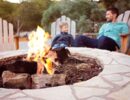
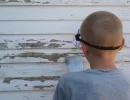
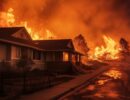
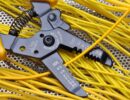
 Don Vandervort writes or edits every article at HomeTips. Don has:
Don Vandervort writes or edits every article at HomeTips. Don has:
